The confusion with these devices results from the fact that the same device can be dual-listed as both a manual motor controller and a self-protected combination motor controller. On one side of the device, the listing and ratings are shown when applied as a manual motor controller. On the other side of the device, the listing and ratings are shown when applied as a self-protected combination motor controller. However, if applied as a self-protected combination motor controller, typically the ratings are reduced and additional accessories and marking requirements are needed. Hence, the question that results: is the device being applied as a manual motor controller or a self-protected combination motor controller? The answer is often unclear, which can complicate proper device application and equipment marking requirements for industrial control panel builders.
This article covers important safety criteria based on Code and Standard requirements for the proper application of manual motor controllers and self-protected combination motor controllers. As a field application engineer, the author finds these devices often misunderstood and misapplied. The objective of this article is to provide guidance to the reader to use the device’s instructions and markings to ensure proper application and marking when used in industrial control panels.

Figure 1: Traditional NEMA (left) and IEC (right) Motor Starters. Combination motor starters would incorporate a circuit breaker or fused switch ahead of the motor starter to provide motor branch circuit short-circuit and ground fault protection.
Manual Motor Controllers
Manual motor controllers, sometimes called manual motor protectors (MMP), are permitted to provide motor overload protection as required per NEC 430.32. MMPs may be also be used as a motor controller (ON-OFF Function) to meet NEC Article 430 Part VII. If marked “Suitable as Motor Disconnect” MMPs are permitted to serve as an “at the motor” disconnect per NEC 430.109, provided they are located between the final motor branch-circuit short-circuit and ground-fault protective device per 430.52 and the motor.
However, MMPs are not listed nor permitted to provide motor branch-circuit short-circuit and ground fault protection per NEC430.52. This is because their creepage and clearance distances are typically not sufficient as required by branch-circuit overcurrent devices such as UL 489 circuit breakers. Similarly, these devices do not have the creepage and clearance distances to be used as a motor branch-circuit disconnect. Thus, per NEC430.109 and UL 508A 30.3.3 , a motor branch-circuit short-circuit and ground-fault protective overcurrent device and branch-circuit disconnect are required on the line side of the MMP.
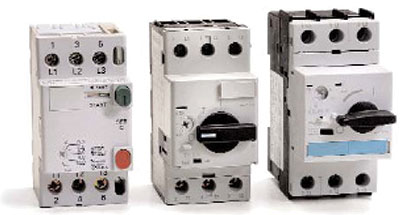
Figure 2: Examples of manual motor controllers (MMPs)
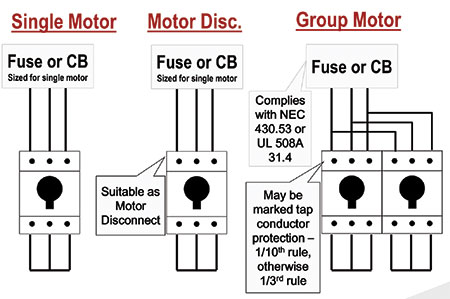
Figure 3: Possible applications of MMPs
Some MMPs have been tested and listed for group motor applications so that several of them may be able to be protected by a single motor branch-circuit short-circuit and ground-fault protective device, such as an upstream fuse or circuit breaker sized not to exceed the maximum ampere rating allowed per the device listing. In group motor applications, other limitations such as horsepower ratings and tap rule restrictions (per NEC 430.53 or UL 508A 31.4 for Industrial Control Panels) must also be investigated. Devices listed for use in group motor installations will be marked for such use to indicate that the device has undergone the appropriate testing to deem it suitable for such use. If investigated for tap conductor protection in group motor installations, they can additionally be marked “Suitable for Tap Conductor Protection in Group Installations.” The advantage of this marking is that the 1/10th rule for tap conductor protection per NEC430.53 and UL 508A 31.4 then applies versus the 1/3rd rule. This means the tap conductor to each manual motor protector must be sized suitable for the motor load but can be as small as 1/10th of the motor branch circuit short-circuit and ground-fault protective deviceversus 1/3rd of the branch-circuit conductors.
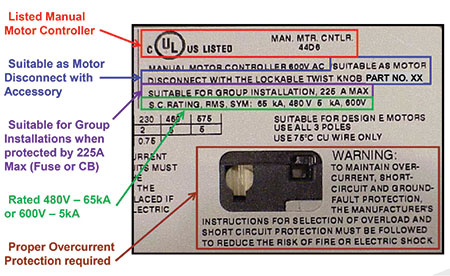
Figure 4: Example of MMP label
MMPs as listed to UL 508 will contain a marking near the agency symbol. This marking should read “Listed Manual Motor Controller” or an abbreviation such as “Man. Mtr. Cntlr.” MMPs listed for use within group motor applications, as the downstream, protected overload/controller device, will be marked for such use along with the required maximum ampere rating for the upstream fuses. MMPs, additionally listed for use as an “at the motor” disconnect, will be marked “Suitable as Motor Disconnect.” MMPs, additionally listed for use as protection of tap conductors in group installations, will be marked “Suitable for Tap Conductor Protection in Group Installations.”
Self-Protected Combination Motor Controllers
Self-protected combination motor controllers are often called self-protected combination controllers, Type E starters, Type E combination starters, or self-protected starters (SPS). SPSs are intended to provide motor overload per 430.32 and motor branch-circuit short-circuit and ground fault protection per 430.52 by combining a magnetic short-circuit trip and adjustable motor overload in one package. SPSs are a listed combination starter suitable for use without additional motor branch-circuit short-circuit and ground fault protection but limited to only single motor circuits.
SPSs have additional test requirements for low level short-circuit interrupting tests followed by endurance tests that are not required for other combination motor controllers. SPSs can be either manual (Type E) or electro-mechanical (Type F – include a load side contactor for electrical operation). SPSs are often marked with a slash voltage rating that indicates the device is limited to use only on solidly grounded wye type systems. When marked with such a slash rating, they cannot be used on ungrounded, corner-grounded or impedance-grounded systems. Creepage and clearance on the line terminals has to be the same as UL 489 and UL 98 devices. Because of this, SPSs are often listed and marked for use with a terminal kit which is required to be installed to ensure line-side terminal spacings are adequate for the application. Additional accessory parts, such as lockable handles, may need to be used as an SPS. SPSs are suitable for use as a motor branch-circuit disconnect or “at the motor” disconnect per NEC 430.109, as a motor controller (On-Off Function) per NECArticle 430, Part VII, and as both a motor branch-circuit disconnect or “at the motor” disconnect and motor controller per NEC 430.111.
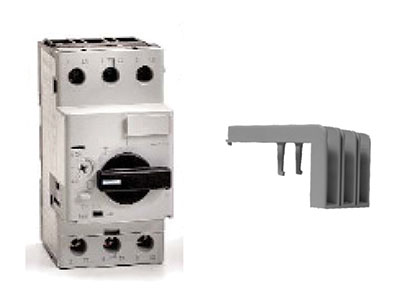
Figure 5: Example of SPS with required spacing adapter accessory.
SPSs, as listed to UL 508, will contain a marking near the agency symbol. This marking should read “Listed Self-Protected Combination Motor Controller” for factory assembled units. If separate components (accessories) are required, the manual self-protected combination motor controller must be marked “Self-Protected Combination Motor Controller when used with (manufacturer and part number of load side component)” or “Motor Controllers Marked For Use With This Component”. If not marked with manufacturer and part number, the other components of the assembly must be marked, “Suitable For Use On The Load Side Of __(B)__Manual Self-Protected Combination Motor Controller, or the equivalent, where (B) is replaced with the manufacturers name and part number of the manual self-protected combination motor controller.” In addition, SPS which are limited in application to only solidly grounded wye type systems will be marked with a slash voltage rating such as 480Y/277 or 600Y/347.

Figure 6: Example of SPS motor controller label
Use of busbar systems
Busbar systems are very commonly used with both MMPs and SPSs. The challenge with using busbar systems with devices applied as SPSs is that only the incoming terminals of the first device use feeder terminals that comply with the feeder circuit spacing required by UL 508A and the listing requirements of the device. The adjoining SPSs are not able to use the standard spacing adapters as marked and required to achieve adequate feeder circuit spacing in order to be applied as SPSs and at the same time allow installation of the busbar as shown in Figure 7.
Because of this issue, the author recommends only using the busbar accessories in group motor installations (where the devices are being applied as MMPs). A group motor application is considered a branch circuit application and feeder circuit spacing is only required on the line side of the branch circuit overcurrent device, not the MMPs. However, when applied in this manner, the additional requirements perNEC 430.53 or UL 508A 31.4 must be met.
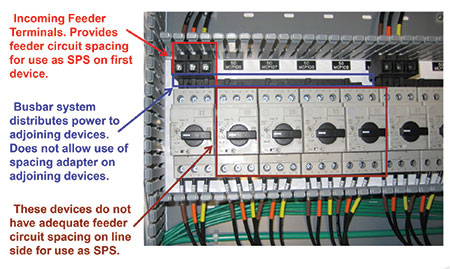
Figure 7: Example of use of busbar systems
Protection of non-motor circuits
SPSs are only permitted to be used in single motor applications. They cannot be used as the branch-circuit protective device for a group motor application or branch circuit protection of other loads, such as lighting, heating, transformers, etc., unless they are listed to UL 489. Some manufacturers do provide products called motor protection circuit breakers which are evaluated per UL 489 (which look like a typical molded-case circuit breaker with an adjustable overload setting) and are suitable for branch circuit protection of all types of loads.
How are MMPs and SPSs applied?
As mentioned previously, the biggest challenge for these devices is to open an industrial control panel and answer the question: is a device being applied as an MMP or SPS? The author recommends analyzing the application of the device as an MMP first.
For a single motor, this is a simple question: is there a suitable motor branch-circuit short-circuit and ground-fault protective devices upstream (fuse or circuit breaker)?
For a group motor application, it becomes more complicated. In this case the user must verify the MMP is suitable for group motor applications: (1) is it protected by a motor branch circuit short-circuit and ground fault device (fuse or circuit breaker) that does not exceed the rating marked on the MMP for group applications, and (2) the tap rules are met per the NEC 430.53 or UL 508A (1/3rd or 1/10th rule discussed previously).
If the device cannot meet these requirements for group motor applications, then the user must look at adding needed accessories to apply the device as an SPS. Because of this, the user is likely recommended to avoid using busbar systems. Finally, the user must revise the ratings (typically go from 480V to 480Y/277V) for the device and assembly. Additional marking requirements are required per UL 508A when used as an SPS.
Assembly Marking Requirements
When a device is used with a slash rating, such as 480Y/277V, NEC 430.83(E) must be considered. Basically this section of the NEC allows the device to be applied only on a solidly grounded wye system. Therefore, it can only be installed on a solidly grounded 480Y/277V system. It cannot be applied on a 480V ungrounded or corner-grounded system or a 480Y/277V resistance grounded system. Section 49.6 of UL 508A would additionally require the industrial control panel to be marked 480Y/277V, as opposed to 480V. In addition, section 54.12 would require an additional marking on the input terminals of “For use on a solidly grounded wye source only.”
Additionally, if a device is being applied as an SPS, section 55.7 of UL 508A requires cautionary markings to the assembly. An industrial control panel provided with an SPS shall be marked:
With the word “WARNING” and the following or the equivalent: “To maintain overcurrent, short-circuit, and ground-fault protection, the manufacturer’s instructions for selection of overload and short circuit protection must be followed to reduce the risk of fire or electric shock.”
With the word “WARNING” and the following or the equivalent: “If an overload or a fault current interruption occurs, circuits must be checked to determine the cause of the interruption. If a fault condition exists, the current-carrying components should be examined and replaced if damaged, and the integral current sensors must be replaced to reduce the risk of fire or electric shock.”
Conclusion
MMPs and SPSs can be cost-effective and space saving devices for use in industrial control panels. However, when using these devices, care must be taken to assure these devices are being applied properly per their listings. Often these devices are best applied as MMPs to take advantage of the use of accessories, such as busbar systems, higher voltage ratings, and reduced marking requirements. When used in a group motor installation, the group motor installation requirements must be followed. If used as an SPS, additional accessories, inability to use busbar systems, voltage limitations and special marking requirements are important application considerations.










Find Us on Socials